From Anxiety to Ennui, a guide to the 'evolved' new emotions in Pixar's 'Inside Out 2'
Ever feel like you have too many emotions for your own good? That was the problem while making Pixar's animated sequel “Inside Out 2.”
The first “Inside Out” in 2015 boasted five colorful, emotional characters in the mind of tween girl Riley, including the lively Joy (voiced by Amy Poehler). And in the earliest iteration of the new movie (in theaters Friday), nine more showed up.
“I really wanted Riley to feel overwhelmed with a lot of emotions,” director Kelsey Mann says. “And I did that, but I also really overwhelmed the audience.” So from his long list of potential emotions, the filmmaker decided on a smaller new gang led by Anxiety (Maya Hawke) that arrives when Riley turns 13, hits puberty and stresses about impressing her coach at hockey camp.
Join our Watch Party!Sign up to receive USA TODAY's movie and TV recommendations right in your inbox
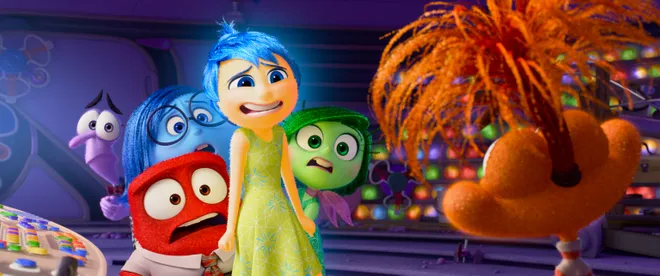
“The ones that stayed were the ones that could best tell Riley's story at this time in her life, and at this time of your life, when you're a teenager, you're really self-conscious,” Mann says. He points to “All About Eve” as an inspiration for “an emotional takeover movie” pitting Joy vs. newcomer Anxiety in a tussle over Riley’s Sense of Self.
Need a break? Play the USA TODAY Daily Crossword Puzzle.
Here’s a rundown of the four new “Inside Out 2” emotions, plus one fun honorable mention:
Anxiety (Maya Hawke)
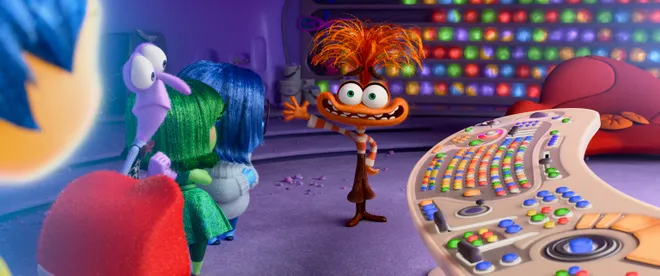
Although she’s the movie’s main antagonist, pushing Joy and the other core emotions out of headquarters, the orange and frizzy-haired Anxiety “doesn't see herself that way, because she's really coming at it from a place of love and protection of Riley,” Mann says. For Hawke, Anxiety wanting to come in and clean house comes from being “stuck in a downstairs office for most of her existence, watching Riley and waiting for her moment and thinking about how she would've done things better” than Joy and Co.
“That's what we all do when we see people in charge of things," Hawke says. "We're all like, ‘Oh, well, if I were president …’ And then you get in charge and being in charge is really hard. You make a lot of mistakes and you often then lose the good things that the person before you was doing.”
Envy (Ayo Edebiri)
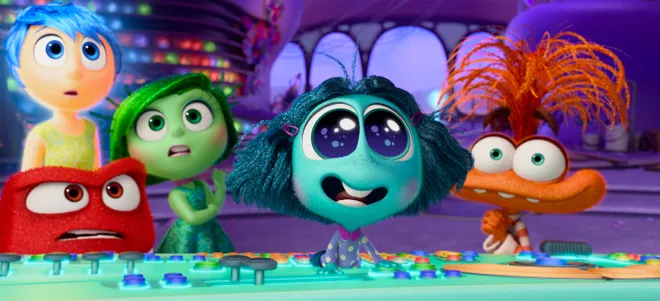
Mann wanted new emotions that ran the size gamut, from really small to huge, and the former became Envy, an excitable teal-haired persona who wants to be cool so bad and yearns to be a part of the action.
“Envy is the feeling you get that you wish you had what others had, and we're like, ‘It'd be really funny if she wishes she had the ability to reach the console just like everybody else,’ ” Mann says of the thought process behind the character’s design and tiny stature. “She needs to be just tall enough that when she stands there on her tippy toes and tries to reach the buttons, she can just barely reach them. She comes up a little short.”
Embarrassment (Paul Walter Hauser)
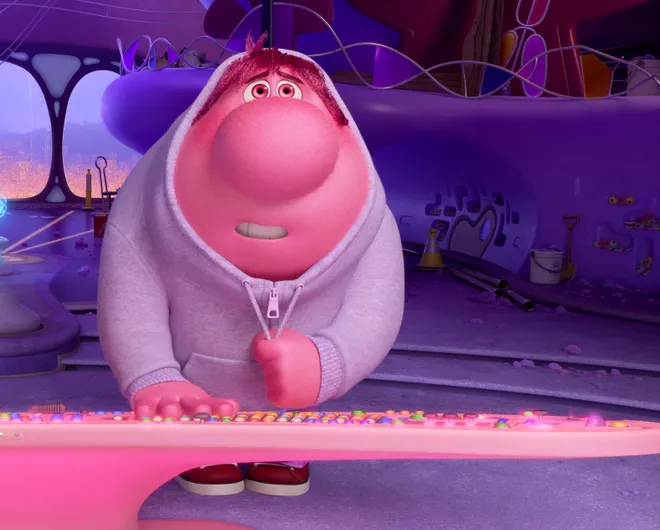
The big pink guy is always hiding in his hoodie and doesn’t say much, but in the core conflict between Joy and Anxiety’s crews, “I wanted Embarrassment to be kind of the first one on the new emotions team that's starting to question what they're doing,” Mann says.
The director teases “a really sweet relationship” that Embarrassment has with Sadness (Phyllis Smith), and his strong and silent nature was inspired by Mann’s daughter, who became nervous with public speaking. “I’m like, what's going on here? It's almost like she's too embarrassed to speak. Wait a minute, I think Embarrassment should not talk very much.’ That feels true to the way it feels to be embarrassed.”
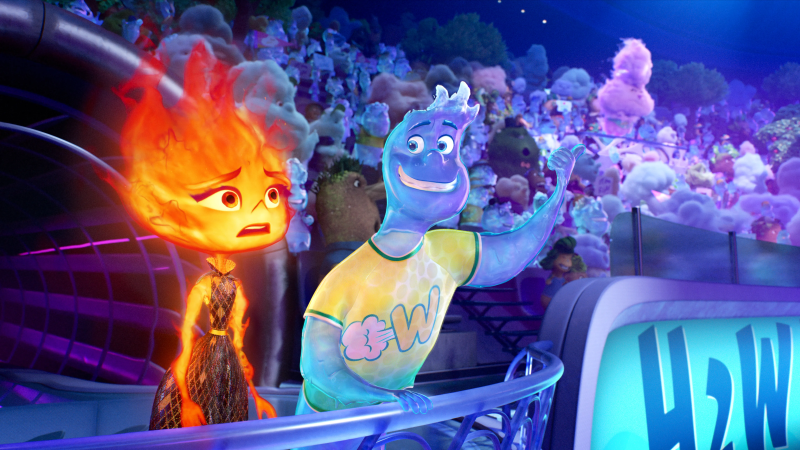
Ennui (Adèle Exarchopoulos)
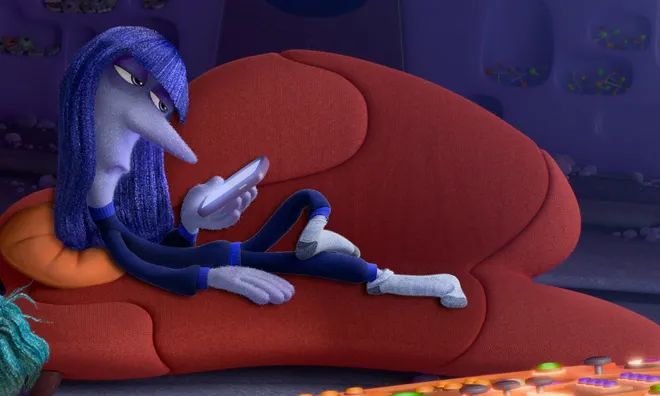
“If you've ever asked your kid how their day was and gotten the response of 'Fine,' then you already know Ennui,” Mann says of the purple-tinged, eye-rolling character who sinks into the couch with her remote console device and is a champion of antipathy.
Mann could have just called her Boredom but he wanted a bilingual character – Ennui has a French accent – among these new emotions that intimidate Joy because they “seem to be more equipped to understand the time that Riley's going through,” Mann says. “That’s why I liked Joy not even knowing what Ennui was (or) how to pronounce her name. And then she speaks a second language. She’s so much more evolved than Joy.”
Nostalgia (June Squibb)
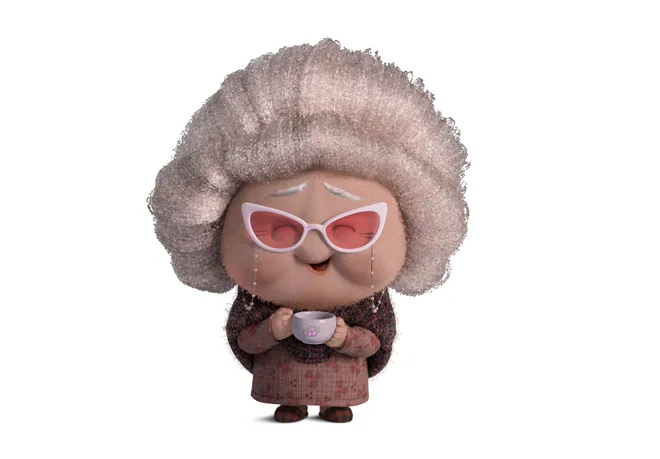
She doesn’t get much screen time but the cameo appearance of elderly Nostalgia, who pops out of a door and is quickly sent back by Anxiety because she’s 10 years too early, will get a laugh out of adults and parents. She was on Mann’s original extended list of emotions, though didn't make the main roster because she wasn't “appropriate for Riley's life at this given time," the director recalls.
“What I love about it, too, is it's something you can relate to, but I also wanted to hint that there are (other emotions) waiting for their time to come up to headquarters and drive on the console.”
Disclaimer: The copyright of this article belongs to the original author. Reposting this article is solely for the purpose of information dissemination and does not constitute any investment advice. If there is any infringement, please contact us immediately. We will make corrections or deletions as necessary. Thank you.







